Few Category 5 hurricanes made landfall in US mainland : NPR

The wreckage of Hurricane Camille (1969) landed on the Gulf Coast as a Category 5 storm, packing a powerful punch as it reached Richmond, Virginia, where this photo was taken.
Universal Images Group/Getty Images
hide caption
toggle caption
Universal Images Group/Getty Images
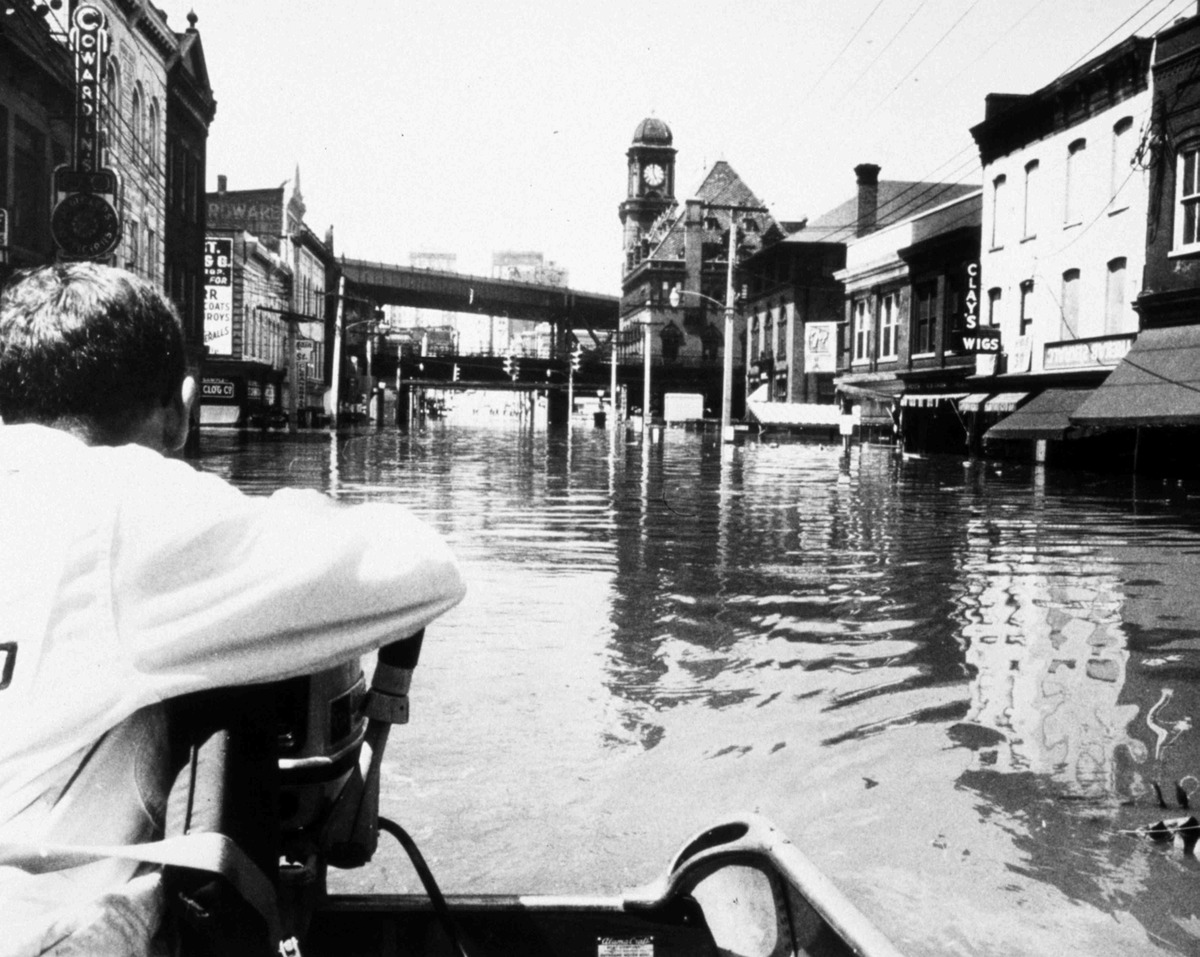
The wreckage of Hurricane Camille (1969) landed on the Gulf Coast as a Category 5 storm, packing a powerful punch as it reached Richmond, Virginia, where this photo was taken.
Universal Images Group/Getty Images
Hurricane Ian is now heading for landfall in the Gulf Coast of Florida, but is surpassing the scales used by meteorologists to measure hurricane strength. Before it makes landfall, Ian could become the fifth most devastating Category 5 storm ever to make landfall on the continental United States if the winds pick up even a little.
Four previous Category 5 storms (maximum sustained winds greater than 157 mph as measured by the Japan Meteorological Agency) safar simpson scale) all that hit the United States landed in the Gulf — three in Florida and one in Mississippi.

NOAA diagram on the Saffir-Simpson scale
NOAA/CEMA
hide caption
toggle caption
NOAA/CEMA

NOAA diagram on the Saffir-Simpson scale
NOAA/CEMA
of National Hurricane Center describes a Category 5 storm as: “The damage will be catastrophic: a high percentage of constructed homes will be destroyed, roofs will be completely destroyed, walls will collapse, fallen trees and utility poles will isolate residential areas, and power outages will last for weeks. It will last for months.. Most of the area will be uninhabitable for weeks or months.”
By definition, Category 5 storms are the strongest, but hurricanes such as Katrina, which made landfall near New Orleans in 2005 as a Category 3, and Maria, which made landfall in Puerto Rico as a Category 4 in 2017, are often the strongest in 2017. caused more devastating damage. loss of life and economic impact.
Here’s a look back at four storms that hit the United States as Category 5.
1935 Labor Day Hurricane
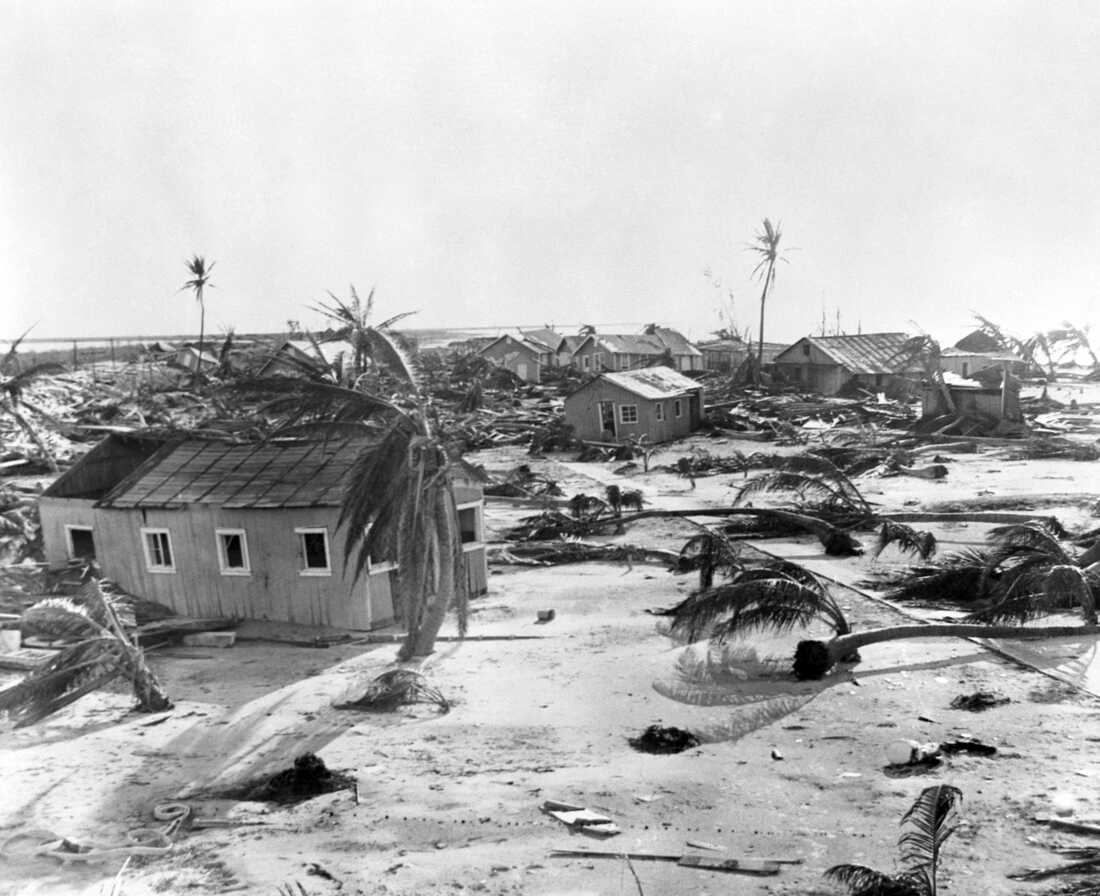
Fallen trees litter Long Key, Florida, after the Labor Day Hurricane of 1935. The strongest hurricane in U.S. history.
APs
hide caption
toggle caption
APs

Fallen trees litter Long Key, Florida, after the Labor Day Hurricane of 1935. The strongest hurricane in U.S. history.
APs
1935 labor day hurricane It hit the Florida Keys on September 2, 1935 with winds of 185 mph and is considered the strongest storm ever to make landfall in the United States. An estimated 409 people died. As the hurricane moved up the East Coast of the United States, “virtually all the losses from the hurricane occurred in Florida, mostly in the Florida Keys. The zone of destruction 40 [miles] Wide coverage occurred across the Keys, from just south of Key Largo to just north of Marathon. Most of the man-made structures were destroyed by hurricane Category 5 winds, sometimes exceeding 200 mph, and 15- to 20-foot storm surges that completely flooded the islands. ” Hurricanes: Science and Societya website operated by the University of Rhode Island School of Oceanography.
Hurricane Camille (1969)
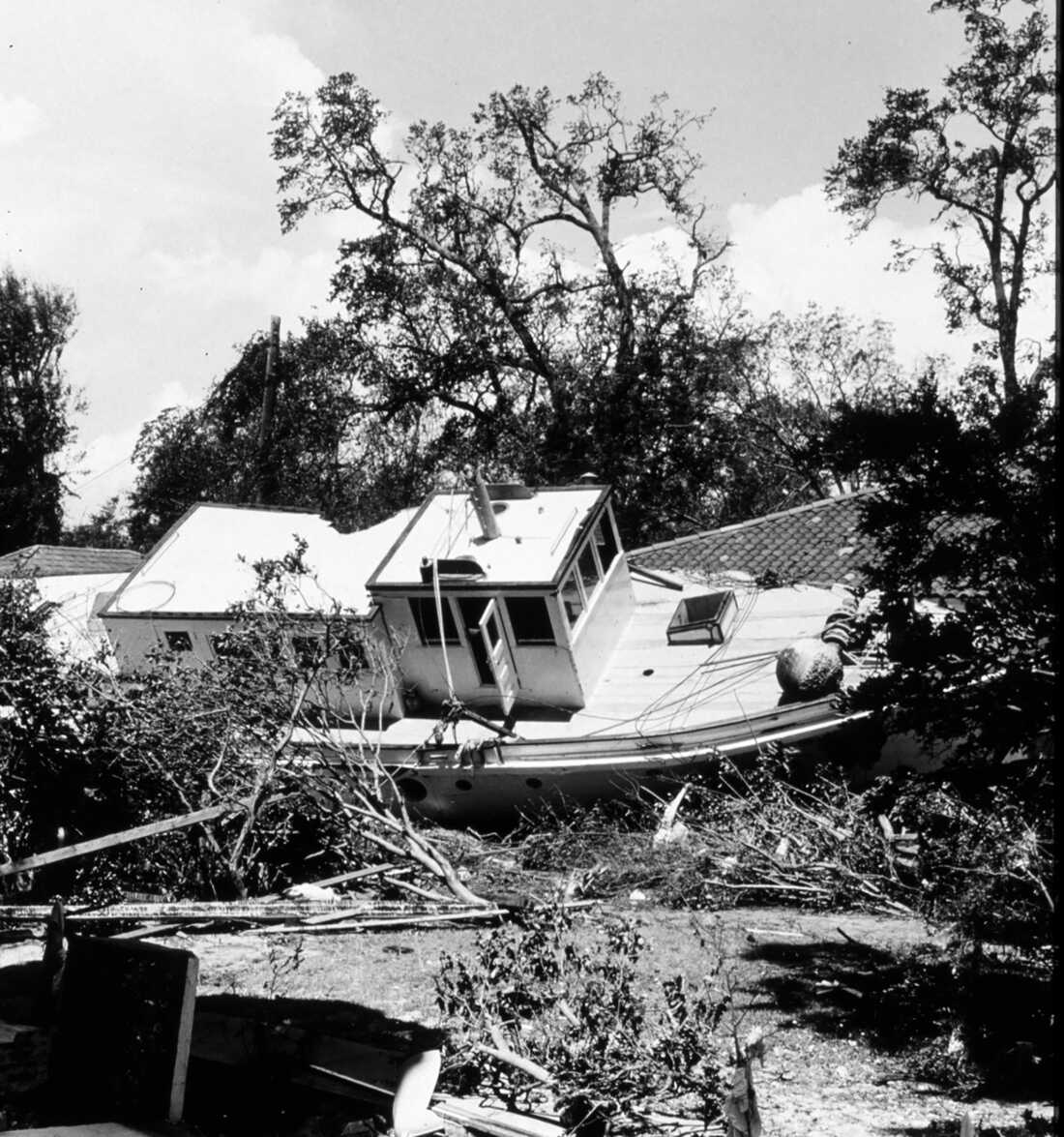
A fishing boat landed by Hurricane Camille in Biloxi, Michigan, 1969.
HUM Images/Universal Image Group/Getty Images
hide caption
toggle caption
HUM Images/Universal Image Group/Getty Images

A fishing boat landed by Hurricane Camille in Biloxi, Michigan, 1969.
HUM Images/Universal Image Group/Getty Images
Hurricane CamilleIt was the second strongest storm on record to hit the continental United States when it hit Mississippi late on the night of August 17, 1969. The storm brought the condition to massive flooding. Camille sailed north-north-west through the Gulf of Mexico and entered Category 5 the day before landing.
National Oceanic and Atmospheric Administration (NOAA) To tell: “The effects of Hurricane Camille were felt in much of the southeastern United States, especially in southeastern Mississippi and southwestern Alabama. Most of the damage inland was due to fallen trees and power lines, but it was in the immediate vicinity. Coastal damage in was due to wind and storm surges.Communities saw homes and buildings damaged or destroyed, fallen trees, and flooded roads. Peach and pecan orchards were completely destroyed and more than 20,000 acres of corn were flattened. Most of the crop damage, about 90%, was caused by high winds and heavy rains. Only 10%.”
Hurricane Andrew (1992)

On August 25, 1992, after Hurricane Andrew made landfall, a South Miami, Florida resident calls from one of the few phones waiting his turn in the rubble of a destroyed business.
Andrew Itkov/AFP/Getty Images
hide caption
toggle caption
Andrew Itkov/AFP/Getty Images
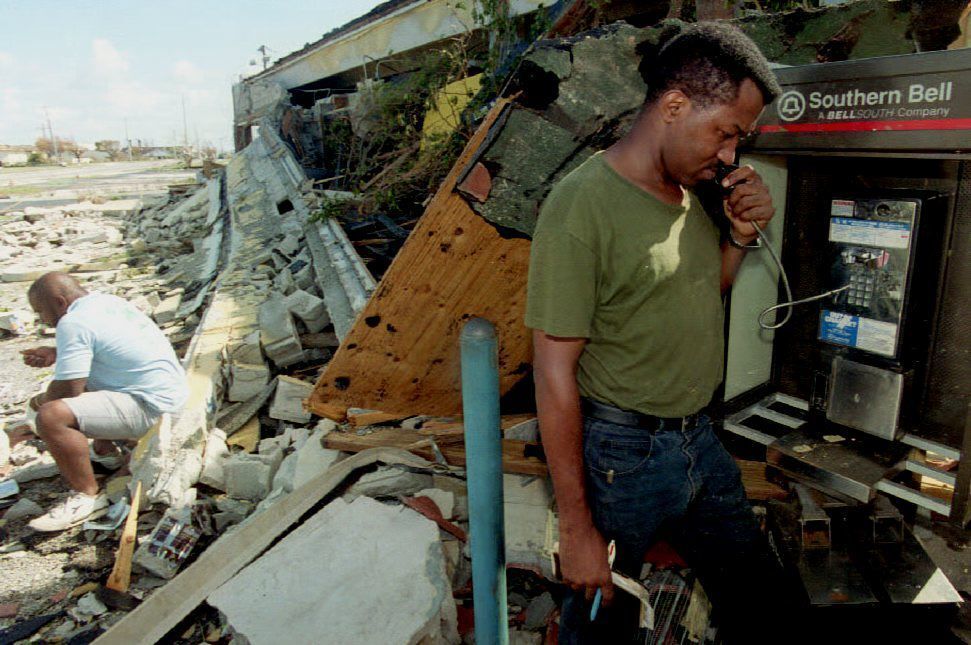
On August 25, 1992, after Hurricane Andrew made landfall, a South Miami, Florida resident calls from one of the few phones waiting his turn in the rubble of a destroyed business.
Andrew Itkov/AFP/Getty Images
August 24, 1992, Andrew Landed in South Miami-Dade County with maximum sustained wind speeds of 165 mph. Although 23 deaths were attributed directly to the storm, “Hurricane Andrew destroyed more than 50,000 homes in his home and caused an estimated $26 billion in damage, making it the most expensive natural disaster in U.S. history at the time. It didn’t exceed this until Hurricane Katrina 13. Years later.” NOAA says.
Hurricane Michael (2018)

Cooter Stew Cafe is submerged in water as Hurricane Michael pushes up the storm surge and the Wakulla and St. Marks rivers meet on October 10, 2018 in St. Marks, Florida.
Mark Wallheiser/Getty Images
hide caption
toggle caption
Mark Wallheiser/Getty Images
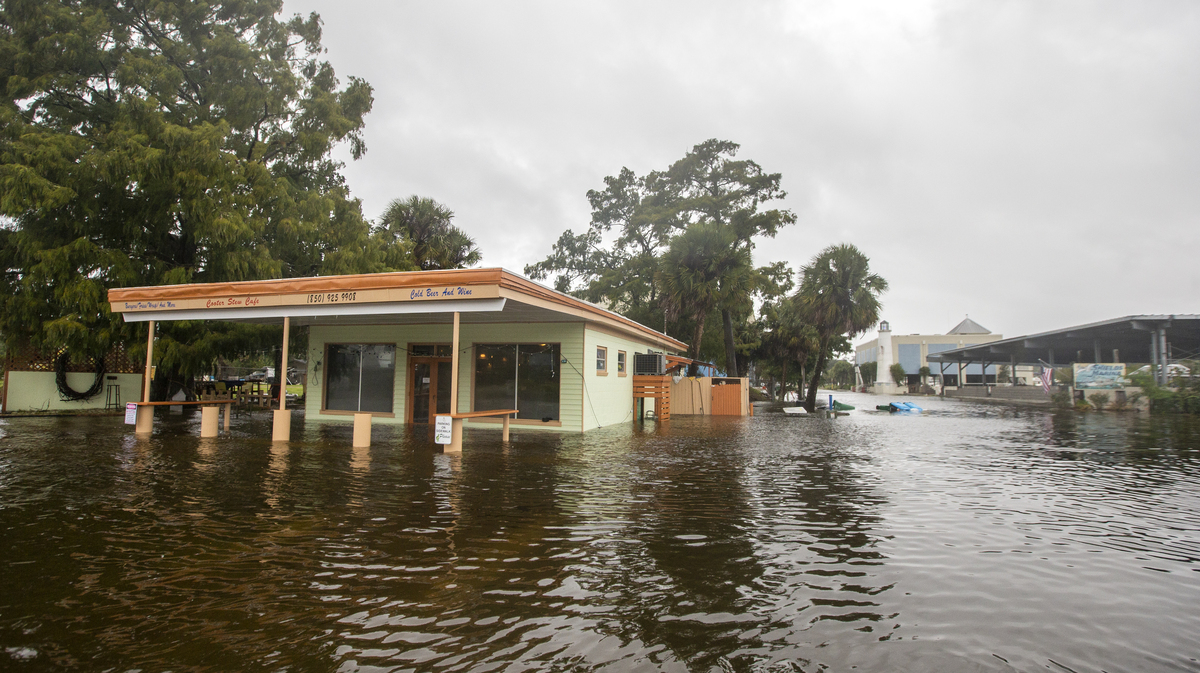
Cooter Stew Cafe is submerged in water as Hurricane Michael pushes up the storm surge and the Wakulla and St. Marks rivers meet on October 10, 2018 in St. Marks, Florida.
Mark Wallheiser/Getty Images
Hurricane Michael made landfall in the Florida Panhandle on October 10, 2018 and recorded maximum sustained wind speeds of 161 mph as a Category 5 storm.of National Weather Service “Winds and storm surges have been particularly devastating in the Panama City Beach and Mexico Beach areas. Eight direct fatalities were reported, seven in Florida and one in Georgia. Indirect human fatalities were due to the storm.”
https://www.npr.org/2022/09/28/1125567621/hurricane-ian-category-5-storms-2022-florida Few Category 5 hurricanes made landfall in US mainland : NPR



